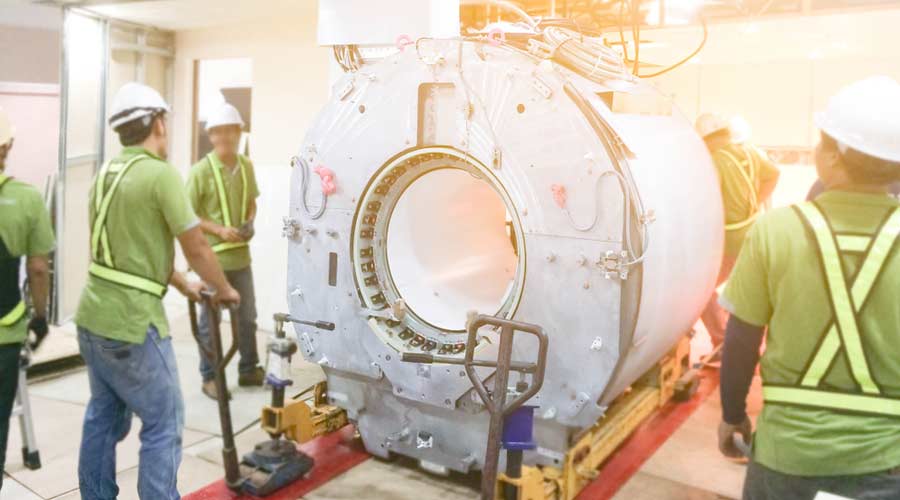The demand for hospital space has increased in recent years. Despite the push for new construction, hospitals and other healthcare facilities are unable to shut down operations. Often, construction and healthcare workers have to work hand in hand to ensure both their jobs get done without causing any harm to patients.
A report from the World Health Organization found that out of every 100 patients in acute-care hospitals, seven patients in high-income countries and 15 patients in low-and middle-income countries will contract at least one hospital-acquired infection (HAI) during their hospital stay. While 70 percent of infections can be prevented by basic infection control measures, one in every 10 affected patients will die from an HAI.
Construction crews are being trained in proper procedures to contain work sites during renovations to limit infections. Through this training, carpenters learn how to seal themselves off from the rest of the facility and patients, how to control air flow by creating negative pressure within their construction area so no debris or contaminants can escape and how to use HEPA filtration to clean the air as they work.
“Most people think of going to the hospital to get better. They don’t stop to consider that they may pick up an entirely new illness that could potentially kill them,” says Tom Bender, infection control risk assessment director with the Eastern Atlantic States Regional Council of Carpenters. “But the sad reality is that almost 99,000 Americans die every year from HAIs. This is a huge problem and magnified now because of the airborne COVID-19 virus that can often be deadly. Unfortunately, there is no national infection control risk assessment (ICRA) construction/containment standard to which healthcare facilities must adhere during construction. When construction workers are laying new concrete, opening existing drywall or reconfiguring plumbing systems, a variety of dangerous contaminants and pathogens that may have laid dormant for the past 10 years can become agitated and spread across the rest of the facility. If proper containment barriers are not established and protocols not enforced, these pathogens can then infect patients whose immune systems may be already weakened by their pre-existing condition.”
A significant lack of understanding and education exists among third parties as they enter healthcare facilities. Contractors often are not aware of the unintentional harm their activities could cause to patients or residents. Without having increased precautions in place, it is not always easy to avoid cross-contamination. With proper training, construction crews now can take precautions when working in a medical environment.
“The pandemic has spotlighted the risk airborne infections bring and made people prioritize their health a lot more,” Bender says. “We now know that a poorly executed construction project can expose visitors to that facility to unnecessary risk for years to come. Generally, the goal is to insulate the construction area from the rest of the facility and use HEPA air scrubbers to create negative pressure and filter the air within the site. However, the exact procedures vary depending on the particular work site, the type of the construction project and the materials that will be used.”
To minimize the risk of infection caused by construction, the Eastern Atlantic Regional Council of Carpenters and United Brotherhood of Carpenters and Joiners of America have implemented the UBC-24 Hour Infection Control Risk Assessment Best Practices program to train members on how to properly contain hazards on work sites. This training includes the UBC eight-hour awareness course for all other construction and maintenance workers in various healthcare facilities. The curriculum can be shared among trade schools, and about 20 percent of the program can be tailored to the specifics of a particular trade.
“The ICRA program saves lives,” Bender says. “By implementing the ICRA standards, those responsible for patient safety are helping everyone, from the patients to the doctors, the staff, the visitors and even the passerby on the street. What we’ve witnessed in the past 10 years in markets across country is that in addition to healthcare facilities, the ICRA standards are now being increasingly requested at elementary schools, physical therapy offices, grocery stores, higher education and beyond.”
The stakes are high when contractors are working in a healthcare facility, so it is critical that managers hire contractors that are properly trained in infection control and risk assessment procedures. If not, lives could be on the line.
“I think one great question hospitals and healthcare facilities should ask when considering which contractors to hire for the job is: ‘Do you provide healthcare to your employees?’” Bender says. “Contractors that don’t care about the health and safety of their workers likely won’t care about ensuring proper safety standards for your patients either. It’s important for contractors to be responsible for their work, and it’s equally as important for healthcare facilities to be accountable for their role in solving this problem.”
Mackenna Moralez is assistant editor with Healthcare Facilities Today.

 UF Health Hospitals Rely on Green Globes to Realize Their Full Potential
UF Health Hospitals Rely on Green Globes to Realize Their Full Potential How Healthcare Facilities Can Be Truly Disaster-Resilient
How Healthcare Facilities Can Be Truly Disaster-Resilient TriasMD Breaks Ground on DISC Surgery Center for San Fernando Valley
TriasMD Breaks Ground on DISC Surgery Center for San Fernando Valley Bigfork Valley Hospital Falls Victim to Data Breach
Bigfork Valley Hospital Falls Victim to Data Breach AI-Driven Facilities: Strategic Planning and Cost Management
AI-Driven Facilities: Strategic Planning and Cost Management